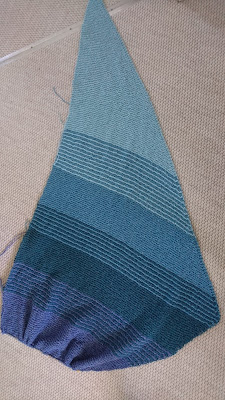When I recently was looking for a recipe on rhubarb jam I found this recipe on
rhubarb redcurrant jam made by Vivien Lloyd. In this recipe it is red currants, which is used to get the rhubarb jam to gel. As the garden of my good friends in Horsens does NOT contain red currants, but white currants I decided to to replace red currants with white currants.
As both red as well as white currants contains plenty of seeds, it is recommend to sieve the currants into a puree, which is when added into the rhubarb.
I also think, that you will have more of red colour in the final jam, if you have access to red currants instead of white currants.
And as usual I bring most of my home-made jam with me to work, so my work colleagues can buy the jam and I donate the money to charity afterwards. I make much more jam, than it is possible for me or my mother to eat. It is the creation process, which I find fascinating.
As other suggestions for jam made with rhubarb you could also have a look into this
rhubarb - raspberry jam or
rhubarb - apple jam. However, the gelled texture is much stronger in this rhubarb - white currant compared to the other two rhubarb jams.
Rhubarb - white currant jam:
- 500 g rhubarb stems - cleaned and cut into 2 cm length
- 500 g white currant - washed and cleaned, the stalks removed
- ½ lemon - only the juice
- 100 ml water
- 700 g sugar
- Place the white currants in a cooking pot with 100 ml of the water. Bring the white currants to the boil.
- Let the white currants simmer until the mass is pulpy.
- Mash the white currants with a potato masher.
- Sieve the white currants, so you only have the puree without any seeds.
- There should be around 225 ml white currant puree.
- Place the rhubarb pieces together with the remaining 100 ml water and the lemon juice of ½ lemon in a cooking pot.
- Bring the rhubarb to the boil. Let the rhubarb simmer for 15-20 minutes until, the rhubarb mass is pulpy.
- Add the 225 ml white currant puree into the rhubarb mass.
- Prepare the jam glasses either by heating up in the oven or adding boiling water to them.
- Add the sugar into the fruit mass and stir until it is dissolved.
- Bring the jam to a rolling boil and boil hard until the setting point is reached. Stir the jam frequently.
- Test of set after 7 minutes using the flake test.
- When the setting point is reached, remove the pan from the heat and leave it to stand for 5 minutes. As the jam settles, push any scums from the surface of the pan to the side and remove it with a metal spoon. The purpose for the waiting step is well to build viscosity in jam, so the fruit pieces will be trapped inside the jam inside of be going to the top of jam.
- Gently stir the jam after the resting time and pour it into the prepared glasses, fill the glasses up to the brim. Remove any scum for the surface of the jam using a tea spoon. Close the glass with a lid.
- Leave the glass upright and disturbed to cool and set.
- Store at ambient temperature.
 The entire length is 320 cm and the maximum wide is 80 cm. I have used 7 yarns of knit yarn of 50 g each. The yarn is made 50% wool, 30% silk and finally 20% nylon.
The entire length is 320 cm and the maximum wide is 80 cm. I have used 7 yarns of knit yarn of 50 g each. The yarn is made 50% wool, 30% silk and finally 20% nylon.




















